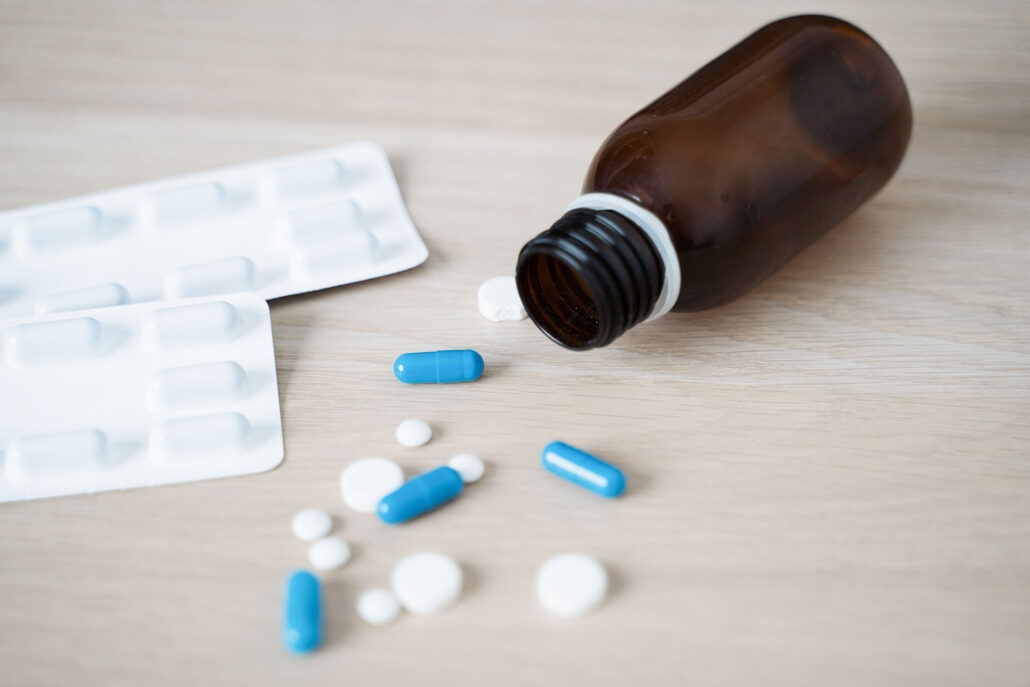Halcion is the trade name of a drug known as triazolam, which is used as a sedative for treating insomnia, thanks to its fast-acting, short-term calming effect.
Despite its established therapeutic benefits, Halcion still has the potential to be misused in various ways. Besides exceeding the prescribed dose, it can also be used recreationally to achieve euphoria.
Misusing the drug can lead to physical dependence, which quickly turns into an addiction that is quite difficult to treat.

However, Halcion addiction treatment is not impossible, and in this guide, you’ll find a comprehensive guide about the best approaches for such addiction.
Table of Contents
- 1 Understanding Halcion (Triazolam)
- 2 How Halcion Addiction Develops
- 3 Recognizing Signs and Symptoms of Halcion Addiction
- 4 Consequences of Halcion Misuse
- 5 Withdrawal and Detoxification from Halcion
- 6 Holistic Approaches to Halcion Addiction Treatment
- 7 Challenges in Halcion Addiction Treatment
- 8 Recovery Stories and Personal Journeys
- 9 Conclusion
- 10 References
Understanding Halcion (Triazolam)
Triazolam is one of the prominent drugs that belong to the triazolobenzodiazepine class. These are benzodiazepine derivatives with special onset of action and duration effects, as the drug exerts its effects faster but they don’t last as long as regular benzos.
Thanks to these unique properties, triazolam’s primary indication is short-term treatment of insomnia, whether it’s to help individuals fall or stay asleep.
The drug was approved by the FDA in 1982, but it’s now rarely used compared to a few decades ago.
Like other drugs of its class, triazolam works by enhancing the activity of Gamma-Aminobutyric Acid, also known as GABA.
This one is a natural central nervous system neurotransmitter responsible for inducing an inhibitory, calming effect that promotes sleep.
How Halcion Addiction Develops
To understand how Halcion addiction develops, we should first distinguish between dependency and addiction, as they are not synonymous.
Dependency refers to the physical adaptation to a substance, where the body requires the drug to function normally.
This leads to tolerance where the body is adapted to the regular Halcion dose and needs a higher dose to achieve its intended effect.

Dependency and tolerance play a critical role in developing addiction, where the individual starts to compulsorily seek the drug at higher doses, regardless of its health consequences. Halcion addiction is a complex process that involves both biological and psychological factors.
For example, genetic predispositions can make some people more susceptible to Halcion addiction than others, so they develop it faster or at a lower dose.
Additionally, there are some risk factors associated that might trigger higher vulnerability to addiction and make it far more challenging to overcome, such as:
- Prolonged use beyond recommended in the prescription
- Combining Halcion with other substances like opioids and alcohol
- Previous history of addiction
- Co-occurring mental health disorders.
Recognizing Signs and Symptoms of Halcion Addiction
Recognizing the signs, symptoms, and behavioral patterns associated with Halcion addiction is essential for early intervention and treatment.
Since Halcion addiction is quite complex, it can reveal itself in a wide range of forms. These typically include:
- Physical Manifestations: Excessive drowsiness, impaired coordination, slurred speech, lack of balance and coordination, and noticeably slow reflexes.
- Psychological Symptoms: Confusion, memory impairment, mood swings, and increased anxiety which often leads to depression.
- Behavioral Indicators: Doctor shopping (seeking multiple prescriptions), using more than the prescribed amount, secretive and suspicious behaviors, and neglecting social and professional responsibilities.
Consequences of Halcion Misuse
Abusing Halcion can lead to a cascade of negative consequences. The most serious one is overdose.
This life-threatening condition is characterized by extreme drowsiness, difficulty breathing due to respiratory depression, and loss of consciousness.
Another major adverse effect of Halcion misuse is memory impairment, especially anterograde amnesia (difficulty forming new memories), which can heavily jeopardize an individual’s personal and professional life as well as their mental health.
Halcion also has a major potential for rebound insomnia, where insomnia symptoms worsen upon any form of drug discontinuation.

Withdrawal and Detoxification from Halcion
Stopping Halcion abruptly (cold turkey) can lead to a surge of unpleasant and potentially dangerous withdrawal symptoms. These include:
- Heightened anxiety
- Tremors
- Nausea
- Seizures
- Rebound insomnia
For that reason, medically supervised detox is highly recommended while treating Halcion addiction to ensure a safe and effective withdrawal process.
Under medical guidance, medical professionals implement a gradual tapering strategy, slowly reducing the Halcion dosage over time.
This minimizes discomfort and prevents severe complications like insomnia and tremors while promoting a smoother transition toward recovery.
Holistic Approaches to Halcion Addiction Treatment
Since Halcion addiction is quite complex, medical professionals use a variety of methods to treat it.
This keeps individuals as comfortable as possible during treatment and increases the chances of successful treatment by targeting the issue from multiple angles.
Structured Rehabilitation Programs
The first step of any personalized Halcion treatment plan is deciding on the most suitable structured rehabilitation program during the initial phase of the treatment.
This is essential to provide comprehensive support for overcoming Halcion addiction, depending on various factors, including the severity of addiction and its duration. These two primary rehabilitation programs include:
- Inpatient Programs: Also known as residential treatment, these offer around-the-clock care in a controlled environment. This program is ideal for individuals suffering from severe addiction, a long history of relapses, and/or co-occurring disorders.
- Outpatient Programs: These are known as non-residential treatments where individuals are allowed to stay in their homes and maintain their daily lives while attending regular therapy sessions. This type is suitable for milder forms of addiction and patients with excellent support systems.

Therapeutic Modalities
Behavioral therapy techniques are a crucial part of breaking free from Halcion addiction. They tackle those deep-rooted psychological issues that keep fueling drug misuse.
One of the most popular forms of treatment here is Cognitive-Behavioral Therapy (CBT). This one effectively restructures thought patterns and behaviors that contribute to addiction and relapse.
Other widely established treatment methods include Motivational Interviewing, which reinforces individuals’ desire to make true change in their lives and commit to recovery.
Group and Peer Support
Group and peer support, such as 12-step meetings, also play a vital role in the healing journey from Halcion addiction. This is because collective wisdom and encouragement from peers can be a powerful motivator for sustained recovery.
Additionally, sharing experiences with others who have walked a similar path provides reassurance and fosters a sense of understanding and empathy between group members.
These connections break down feelings of isolation and provide a safe haven to share experiences and struggles as well as helpful strategies for overcoming addiction.
Alternative and Complementary Therapies
Besides primary treatment methods, several alternative and complementary therapy techniques support Halcion addiction treatment, such as meditation, yoga, and biofeedback.
These techniques promote stress management, inner calm, and overall well-being, which can help in addressing underlying emotional and psychological factors contributing to addiction.
Post-Treatment Care
The journey toward full recovery is a fairly long one. To maintain a long-term recovery, medical professionals and therapists will recommend a variety of relapse prevention strategies. These include:
- Identifying triggers
- Developing coping mechanisms to deal with daily stressors
- Building a strong support network
- Long-term follow-ups to stay on track and address any potential relapse risks.

Challenges in Halcion Addiction Treatment
Overcoming Halcion addiction involves several challenges that need to be addressed by both patients and medical professionals. These include:
- Co-existing Mental Health Issues: Addressing underlying mental health conditions is crucial to prevent relapse. It’s also essential to manage any necessary medications to treat these conditions during initial treatment and after.
- Navigating Potential Complications from Polydrug Use: As previously established, abusing multiple drugs makes recovery more challenging and requires a carefully planned detoxification protocol to manage withdrawal symptoms.
- Overcoming Societal Stigmas Associated with Addiction: This is especially true in the case of prescription misuse, as patients might avoid seeking help to avoid the societal stigma surrounding addiction. Breaking down these stigmas through awareness campaigns is critical to encourage them to seek help.
Recovery Stories and Personal Journeys
Although there are plenty of treatments for Halcion addiction, it’s essentially a journey of resilience and inner strength.
For that reason, sharing stories of those who managed to overcome their addiction can be a beacon of hope for those who are struggling to find their way.
Since Halcion isn’t as commonly used as it used to be, you may not find plenty of stories addressing it directly. But don’t worry, as there are tons of stories of people who managed to overcome even more addictive drugs out there.
Benzo.org offers a wide range of success stories of other benzodiazepine derivatives, including the inspiring story of Bee and Jim, who were addicted to sleep aids and managed to emerge victorious in the end!

Conclusion
Halcion addiction may be a tough battle, but it’s not an unbeatable one. With the right help and support, people can break free from addiction’s grip and get their lives back on track.
If you or your loved one is struggling with addiction, please seek immediate help, as early intervention, increased awareness, and compassionate support can massively improve the chances of a successful recovery.
Please contact Long Island Interventions for information about Halcion Addiction Treatment near you.
References
- https://www.ncbi.nlm.nih.gov/books/NBK547843/
- https://www.frontiersin.org/articles/10.3389/fphar.2021.625233/full
- https://www.ncbi.nlm.nih.gov/books/NBK513311/
- https://www.ncbi.nlm.nih.gov/books/NBK233852/
- https://www.pfizermedicalinformation.com/en-us/halcion/overdose
- https://pubmed.ncbi.nlm.nih.gov/1354979/
- https://pubmed.ncbi.nlm.nih.gov/1315343/
- https://www.apa.org/ptsd-guideline/patients-and-families/cognitive-behavioral
- https://www.ncbi.nlm.nih.gov/pmc/articles/PMC8939890/
- https://www.ncbi.nlm.nih.gov/pmc/articles/PMC2939454/
- https://www.benzo.org.uk/success.htm

